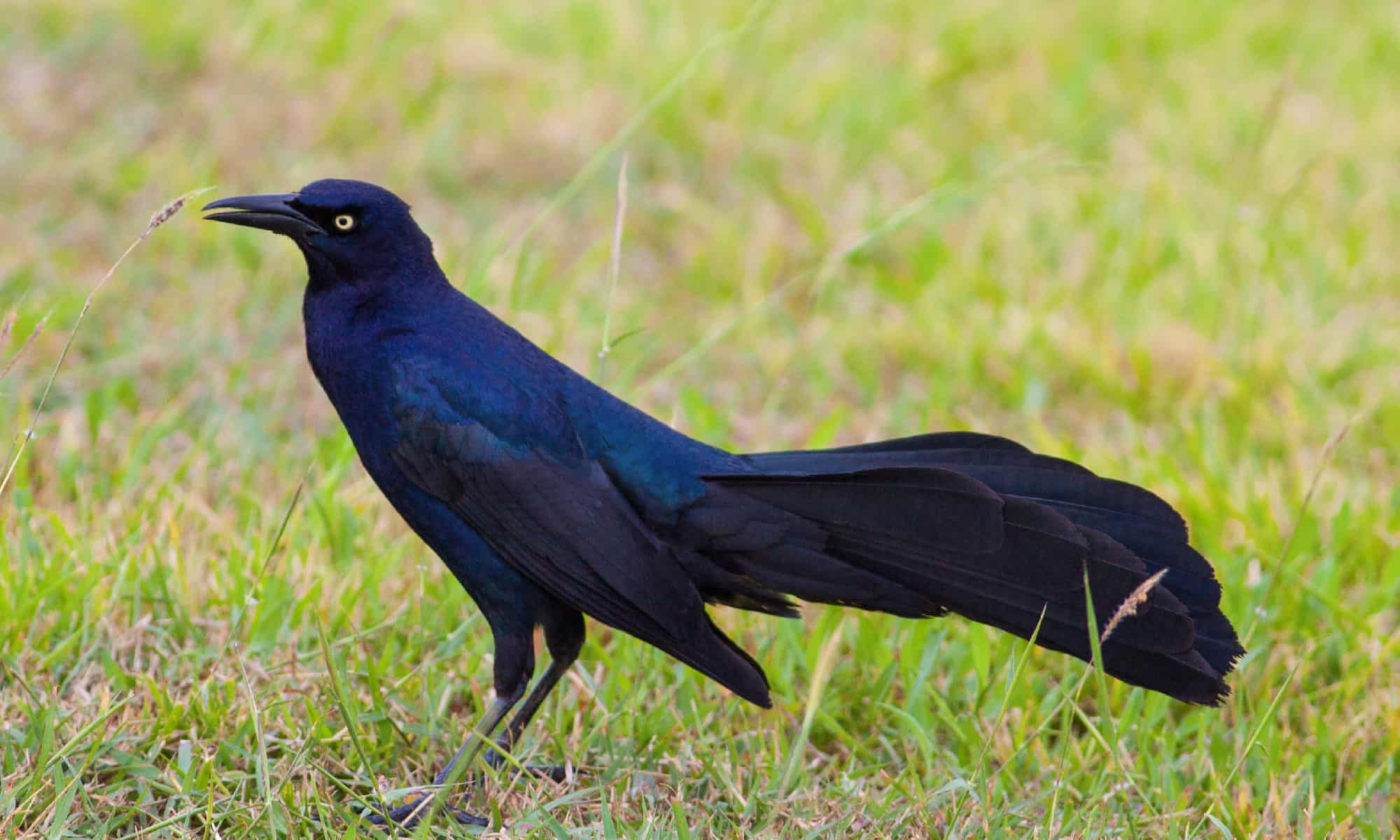Black birds are common worldwide and often get overlooked because of their ordinary plumage. But each dark-feathered species is unique to its environment and plays a role in the ecosystem. Many black bird species, like crows and ravens, are highly intelligent creatures and are fun to watch at feeders or in their natural habitats. Do you have backyard visitors you need to identify? Check out these 12 different types of black birds in North America and discover where they live, what they eat, and how to distinguish them.
American Crow
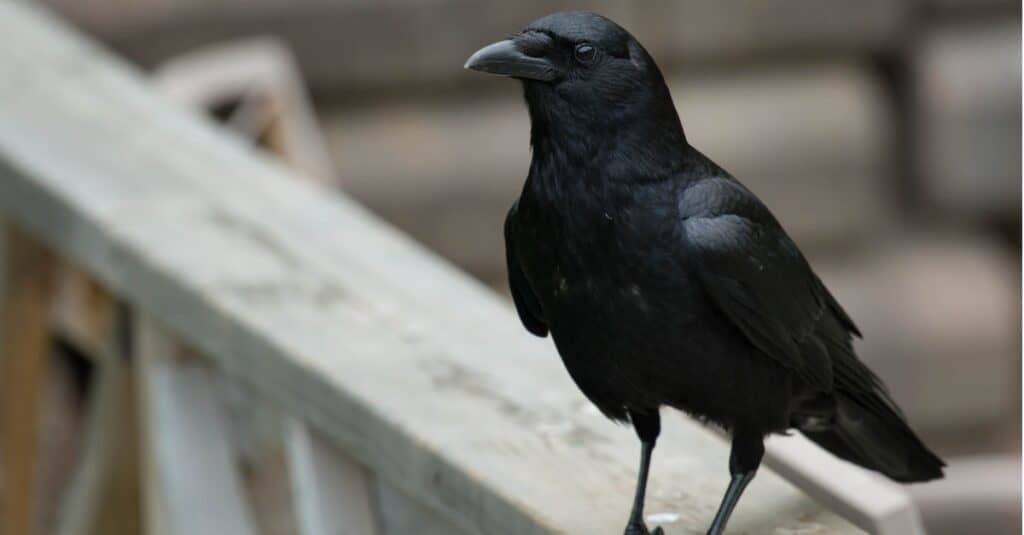
Crows
generally circle overhead then come in fast and low for the attack.
©iStock.com/PaulReevesPhotography
American crows are large passerine birds and familiar animals across North America. They measure 16 to 20 inches, with males larger than females. This species is slightly larger than a raven with comparatively big heads, and they have iridescent black plumage. These birds are incredibly adaptable and one of the most intelligent species on earth. They frequently live, eat, and nest near human habitations, often gathering in large communal roosts. They range as far north as Canada, throughout the United States, and as far south as Mexico. Crows have extensive habitat variation, including farmlands, open woodlands, parks, and major cities.
Red-Winged Blackbird

Red-winged blackbirdS most frequently inhabit rural and agricultural areas, where they roost in large flocks.
©iStock.com/Michael-Tatman
The red-winged blackbird belongs to the Icteridae family, which encompasses the New World blackbirds. This species is mainly black, except for the adult male’s red shoulder patches and yellow wingbars. And females are blackish-brown with pale undersides. These blackbirds range throughout most of North America and Central America, breeding in Alaska, Florida, the Gulf of Mexico, Mexico, Guatemala, Honduras, and Costa Rica. You can find them in fresh and saltwater marshes, watercourses, dry meadows, and old fields. They most frequently inhabit rural and agricultural areas, where they roost in large flocks, occasionally numbering up to thousands (even millions) of individuals.
Common Raven
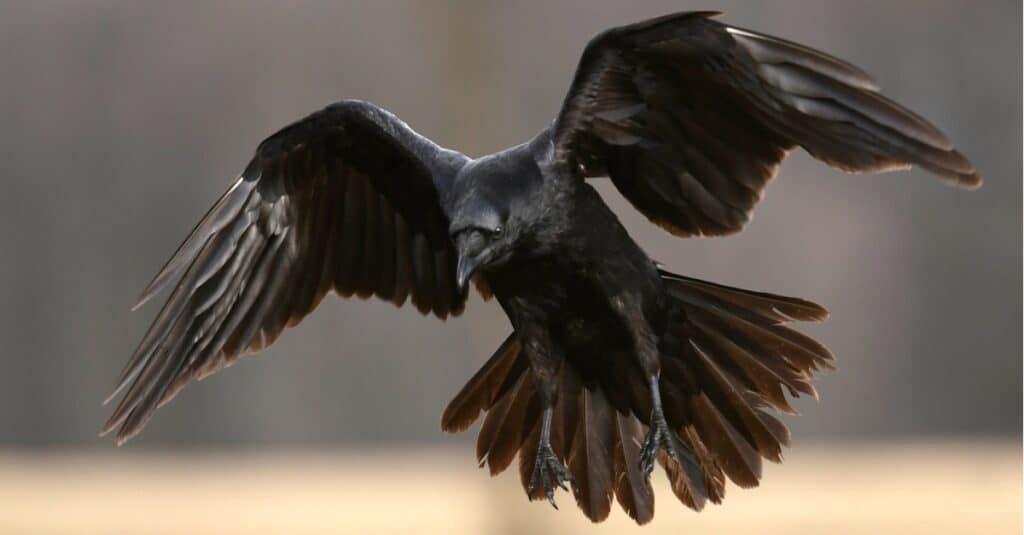
Corvids, such as ravens, are one of the few
animals that use tools
regularly to obtain food.
©iStock.com/Piotr Krzeslak
Common ravens are large birds from the Corvid family and one of the heaviest and largest passerines, weighing up to 4.5 pounds and measuring 21 to 26 inches long. Similar to the crow, ravens have iridescent plumage and dark irises. They also have elongated throat feathers and long, thick bills, easily one of the largest in its order. Ravens have one of the largest ranges of any member in its genus and can be found throughout most of the northern hemisphere. You can find them in North America, Europe, Asia, Africa, and even islands in the Pacific Ocean. Their habitats include wooded areas with large expanses of open land and coastal regions.
European Starling
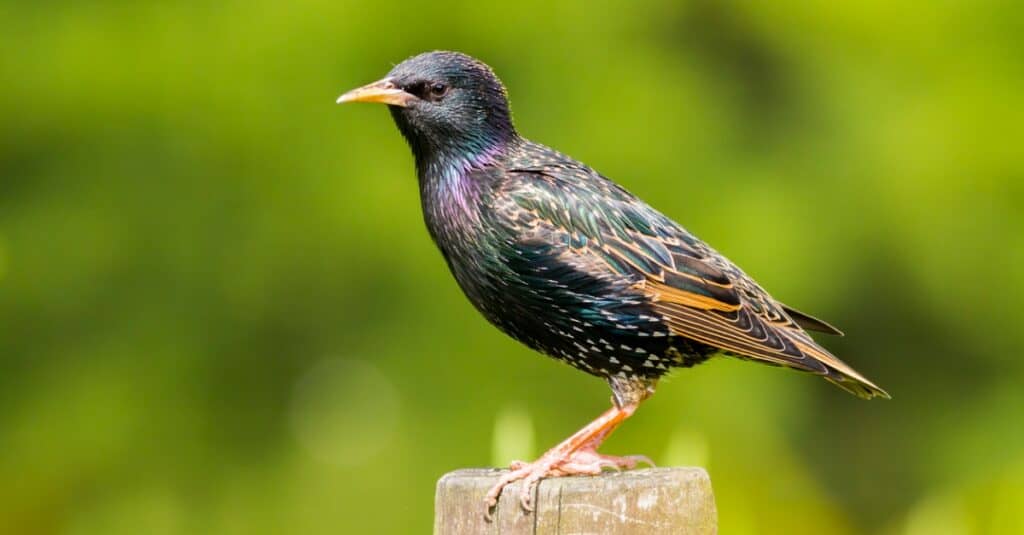
European starlings
have glossy, iridescent feathers.
©iStock.com/chris2766
The European starling, or the common starling, is a medium-sized passerine with glossy black plumage and a green and purple metallic sheen. Their feathers are speckled with white, their legs are pink, and their bills are black in winter and yellow in summer. These birds are notorious for being noisy and mimicking. They live in open habitats, and their native range includes Europe, Asia, and northern Africa. However, this species has been introduced to Australia, Canada, the United States, Mexico, Argentina, and South Africa. Starlings are omnivores who eat a wide range of insects, including certain invertebrate pests.
Common Grackle
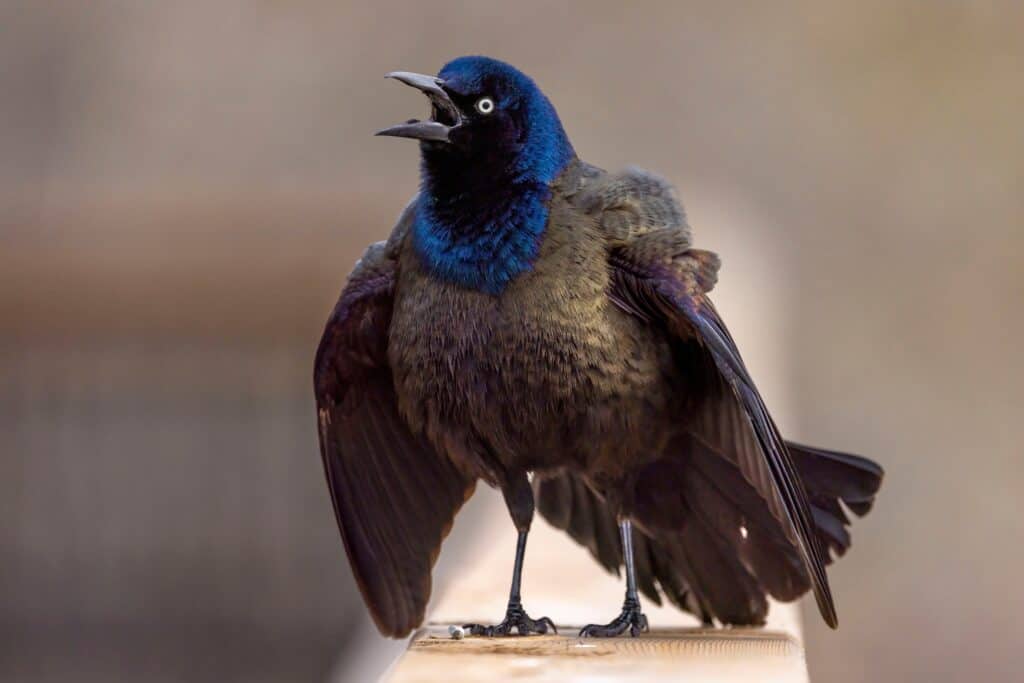
The
common grackle
is a New World blackbird, measuring 11 to 13 inches and weighing 2.6 to 5 ounces, with a 14 to 18-inch wingspan.
©Kendall Collett/Shutterstock.com
Common grackles are large icterid birds with long, dark bills, long tails, and large wings. Their feathers are black with a bronze sheen on the body and blue, green, or purple iridescence on the head. They are somewhat sexually dimorphic; females are smaller, with shorter tails and less iridescence in their plumage. The common grackle is native to North American regions east of the Rocky Mountains. Most of their populations are permanent in their habitats, but northern birds in Canada migrate to the southeastern United States. They live in large flocks and inhabit wet, open woodlands, marshes, parks, and agricultural fields.
Black Swift
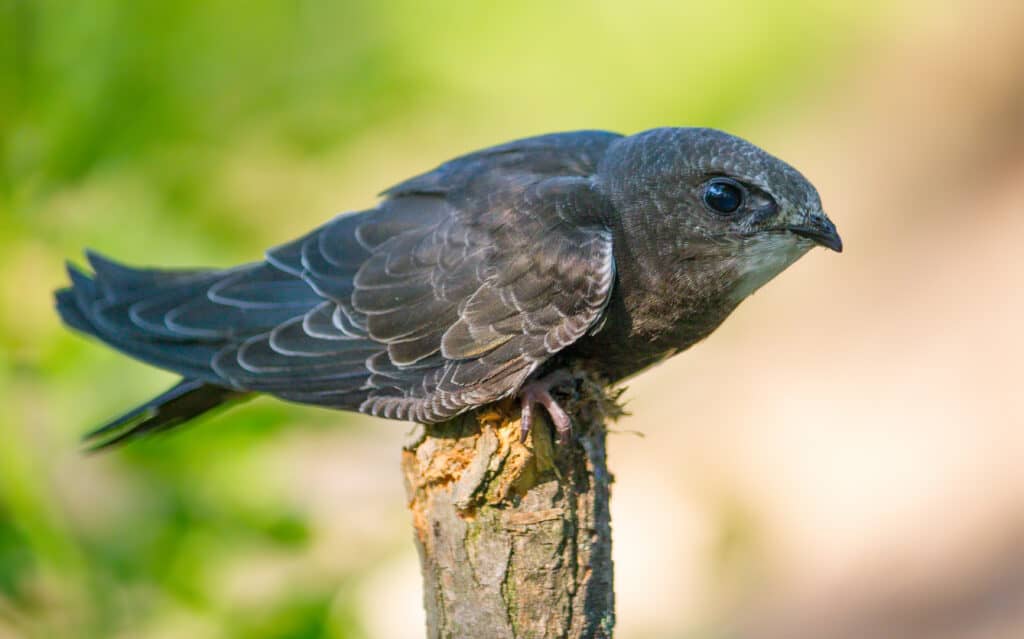
Black swifts
live in North America
, ranging from British Columbia to the United States, Mexico, Brazil, and Costa Rica.
©Alexey Tolmachov/Shutterstock.com
The American black swift belongs to the Apodiformes order, which includes treeswifts and hummingbirds. These birds have long, narrow, curved wings that allow them to soar high in the sky. Their plumage varies from dark grey to black, with fine white layering and dark shoulders. They also have short forked tails, which they fan out during flight. This species lives in North America, ranging from British Columbia to the United States, Mexico, Brazil, and Costa Rica. Their natural habitats include forests and open areas, and they nest on cliff ledges near the ocean or waterfalls.
Phainopepla
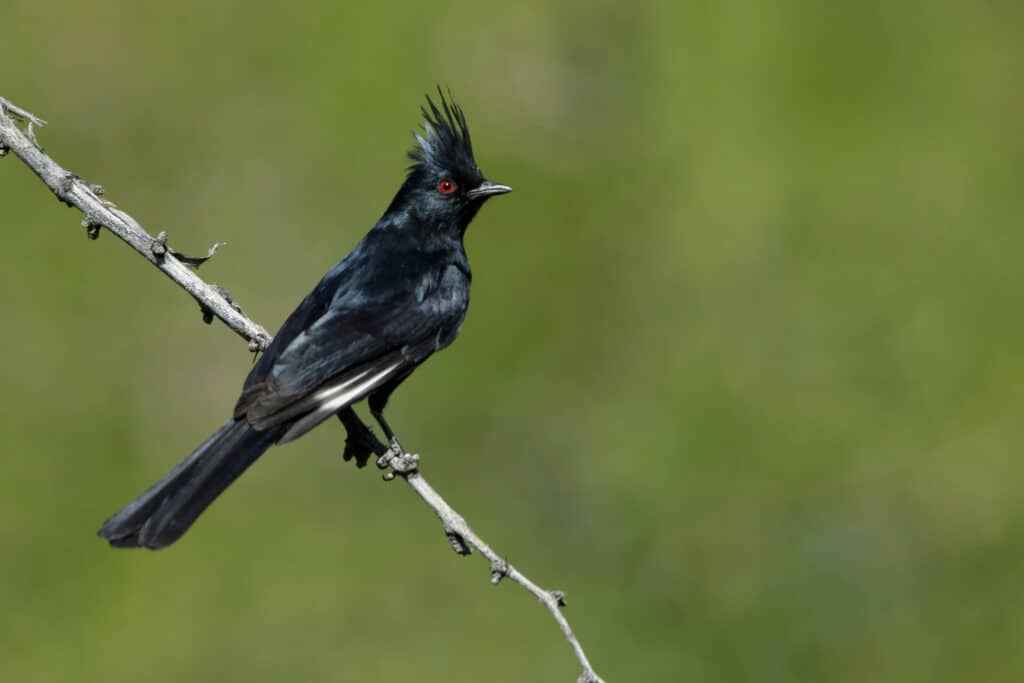
The phainopepla lives primarily in Central America but can range as far north as California,
Utah
, and Mexico.
©Agami Photo Agency/Shutterstock.com
The northern phainopepla is a medium-sized bird in the silky flycatcher family. This species is slender with a distinctive crest, a long tail, and a short, thin bill. Adult males have glossy black feathers and white wing patches only visible during flight. Females are silvery-grey with light grey wing patches; both sexes have dark red eyes. The phainopepla lives primarily in Central America but can range as far north as California, Utah, and Mexico. Their habitats include desert scrub, mesquite, and oak foothills. Fun fact: their favorite food is desert mistletoe!
Groove-Billed Ani
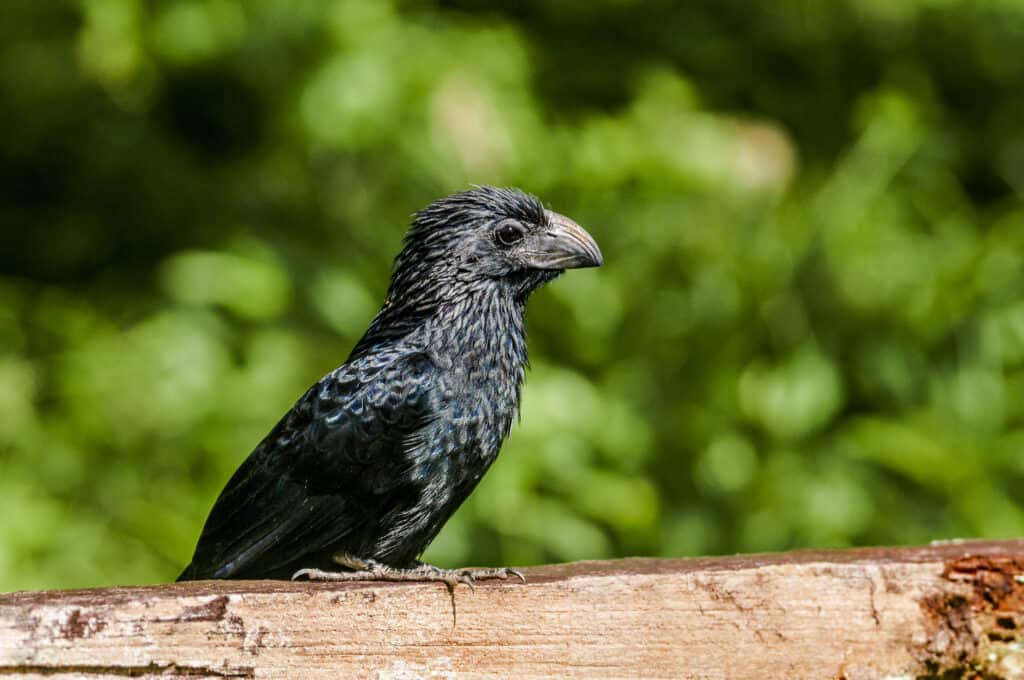
The groove-billed ani spends its days foraging for insects, seeds, and fruits in open country like pastures, savannas, and orchards.
©Nick Pecker/Shutterstock.com
The groove-billed ani is a relatively large tropical bird from the cuckoo family. They have very long tails and huge, curved bills with deep grooves. Their plumage is entirely black, with white layering on the head and neck and a slight bronze sheen on the wings. These birds are nonmigratory and range from southern Texas, Mexico, Central America, and the northern tip of South America. They spend their days foraging for insects, seeds, and fruits in open country like pastures, savannas, and orchards.
American Coot
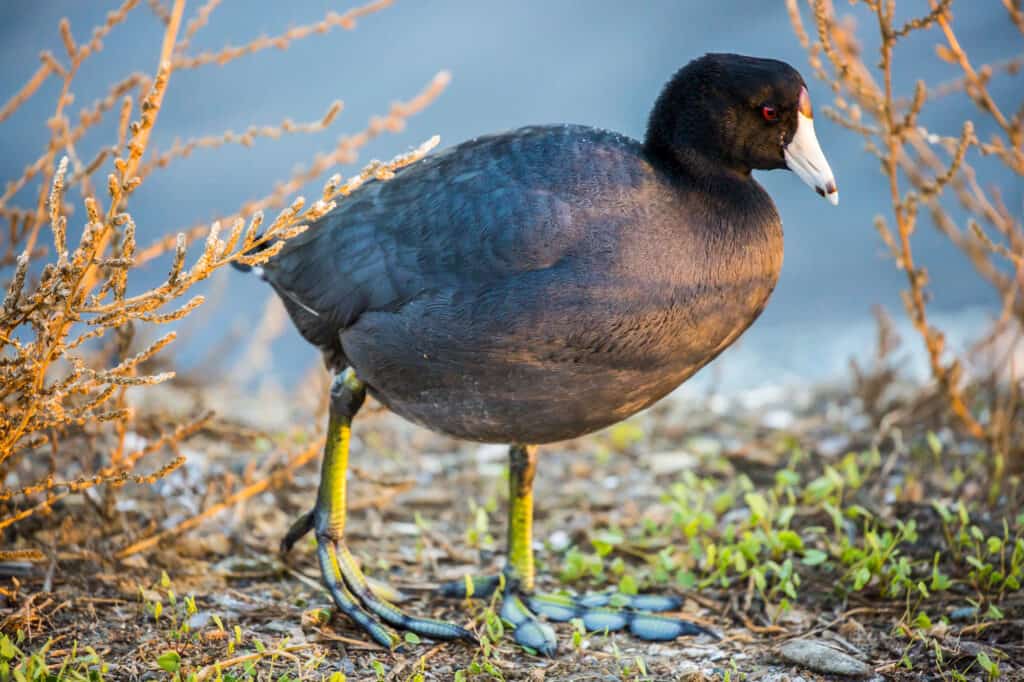
The coot is a North
American bird
occupying most of the continent.
©yhelfman/Shutterstock.com
American coots, also called mud hens, are medium-sized birds belonging to the rail family. These birds have entirely black bodies, except for their white beaks, frontal shield, and the underside of their tails. Their shield also has a reddish-brown spot between the eyes. Males and females look similar, but females are smaller. The coot is a North American bird occupying most of the continent. They live year-round in the pacific and southwestern United States and Mexico. And populations that breed in the northeastern United States migrate as far south as Panama. Their natural habitats include low-elevation freshwater ponds, lakes, and rivers.
Brown-Headed Cowbird
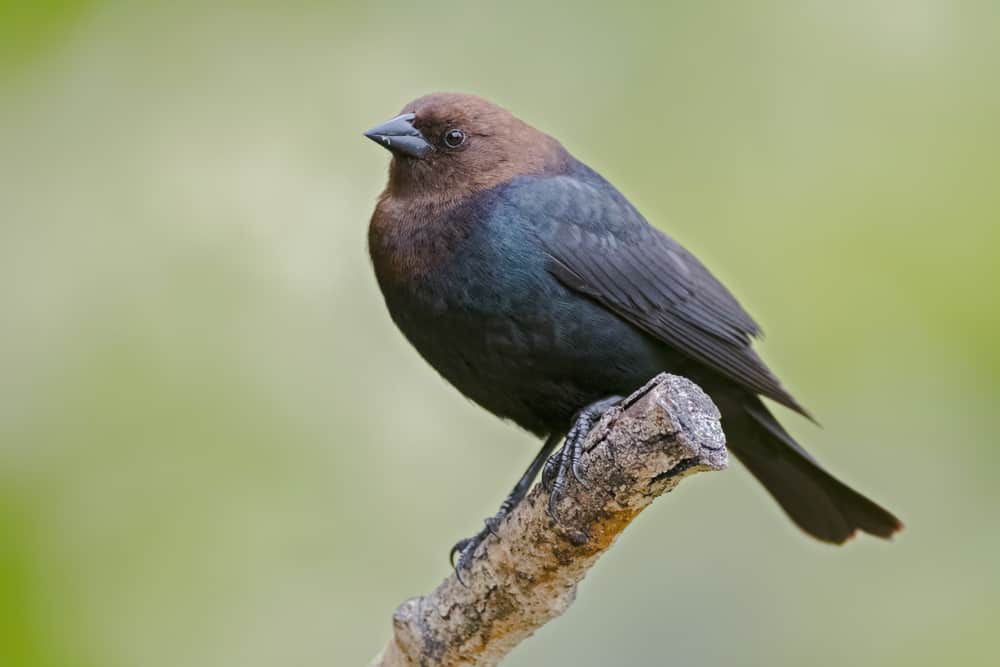
The cowbird is smaller than most blackbirds and features a finch-like head and beak.
©punkbirdr/Shutterstock.com
The brown-headed cowbird is a small New World blackbird (icterid) native to North America. This species is famous for its brood parasitism ways, meaning it relies on other bird species to raise its young. The cowbird is smaller than most blackbirds and features a finch-like head and beak. Adult males have black bodies and brown heads; females are dull grey with pale throats and light streaking. Populations inhabiting the southern United States live year-round, but those who breed in Canada and the northwestern United States migrate to Mexico for the winter. You will often find them in fields, pastures, meadows, and suburban backyards.
Brewer’s Blackbird
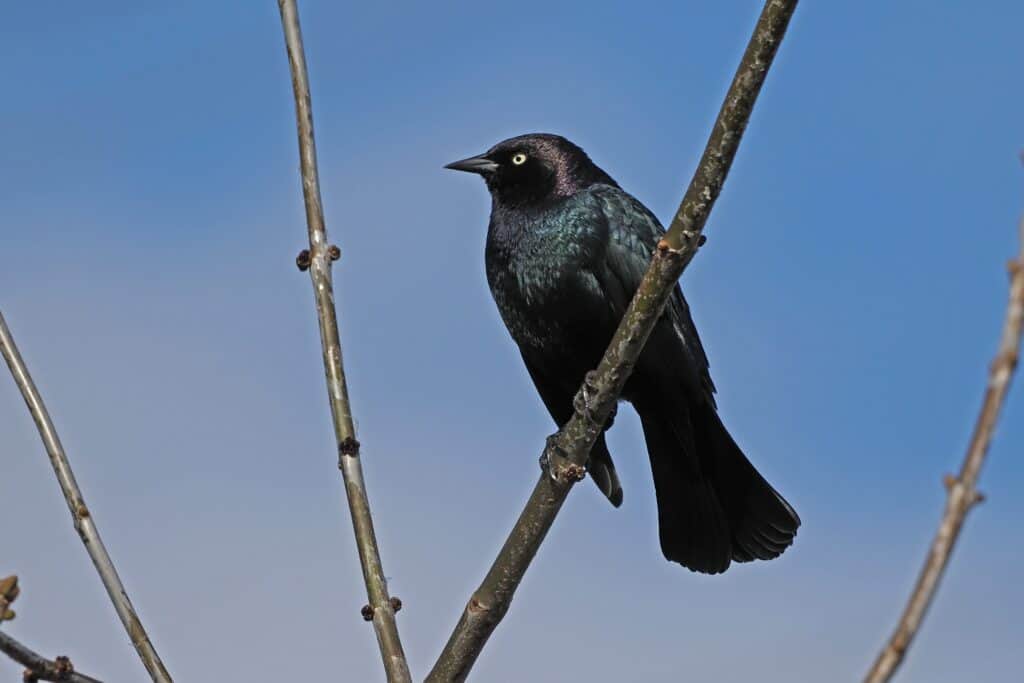
Brewer’s blackbirds live across most of
North America
, inhabiting northwestern regions year-round.
©John Rakestraw/Shutterstock.com
The Brewer’s blackbird is a medium-sized icterid native to the New World. Adult males are entirely black with a purple iridescent sheen on their heads and bluish-green highlights on their bodies. Females have brownish-grey bodies with only a slight iridescence. And males have bright yellow irises, while females have dark brown. They live across most of North America, inhabiting northwestern regions year-round. Populations that breed in Canada migrate to the southeastern United States and Mexico for the winter. These blackbirds live in open areas near water, like fields, prairies, farms, and parks.
Great-Tailed Grackle

Common grackles are typically monogamous and form breeding pairs in the spring. Courtship involves singing, posturing, and flight displays.
©Melinda Fawver/Shutterstock.com
Great-tailed grackles, also known as Mexican grackles, are medium-sized passerine birds native to the Americas. Adult males have glossy black plumage with a purple-blue sheen, and females feature brown feathers with darker wings and tails. This species has a long, pointed bill and an extra long keel-shaped tail. They are sedentary in their range, meaning they live in their environments year-round. You can find them in the tropical lowlands of Central and South America, ranging as far north as the southern United States.
Why Are Blackbirds the Subject of Superstition?
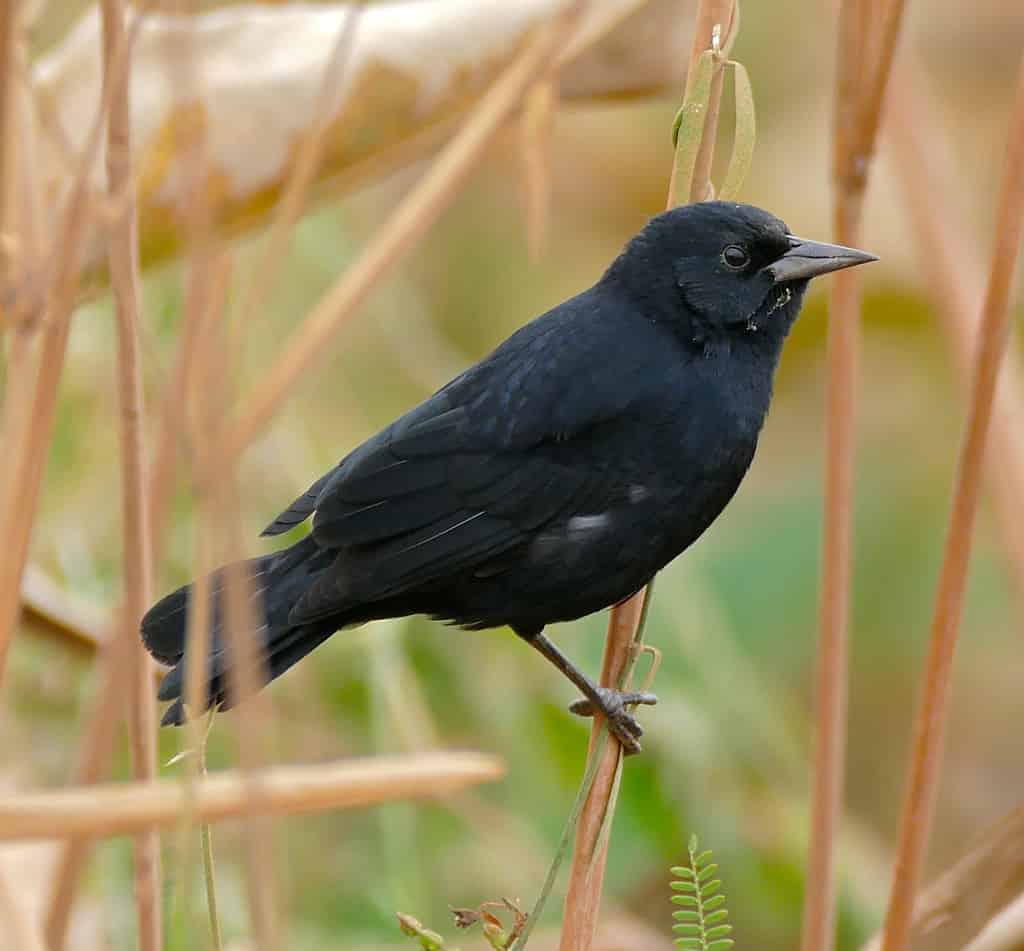
Blackbirds have long been the subjects of human superstition.
©Bernard DUPONT from FRANCE / CC BY-SA 2.0 – Original / License
The connection of blackbirds to human superstitions has been present for centuries. Negative associations have been especially prevalent in reference to crows and ravens, notably during the European Middle Ages. The color of the birds was likened to darkness or death, giving these birds an ominous reputation. This was especially true if blackbirds were witnessed in certain contexts, whether it be on a battlefield littered with bodies, at an execution, at a funeral, or in conditions where humans faced scary situations like the plague.
Blackbirds came to be one of the symbols of the pagan holiday Halloween which celebrates all things scary and creepy. These birds were also seen as supernatural messengers, bringing omens of something negative that would soon happen.
In Native American cultures, blackbirds were honored for their intelligence and were valued as spiritual guides. But with the coming of Europeans to the continent, some of their negative views of these birds rubbed off on indigenous peoples. Today, these birds are associated with the supernatural, the unknown, misfortune, or death.
Thank you for reading! Have some feedback for us? Contact the AZ Animals editorial team.

